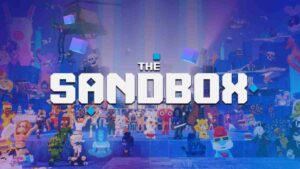Legend of Ymir is heading to Wemix next year, and it’s positioning itself as more than just another fantasy MMORPG. Built in Unreal Engine 5 and rooted in Norse mythology, the game fuses traditional online RPG mechanics with Web3 infrastructure—staking its ground somewhere between spectacle and system-driven persistence.
This isn’t a retro pixel throwback or a low-poly grindfest. The visuals aim for high-end detail, and the structure leans into large-scale multiplayer with guild-versus-guild tension, open-world exploration, and layered class-based progression. But behind that is a blockchain-enabled economy designed to shift how time investment translates into in-game value.
Norse Themes Drive Worldbuilding and Class Identity
The setting takes clear cues from Nordic myth, but it’s not a one-to-one recreation. Instead, the world of Ymir uses gods, giants, and folklore as a foundation to build new factions, class roles, and environmental zones. The tone leans dark-fantasy, closer to Black Desert or Vindictus than something stylized or high fantasy.
Playable classes reflect that tone: heavy armor, elemental magic, shapeshifting abilities. It’s all framed within the broader conflict between divine and mortal realms, which ties directly into the game’s PvP and PvE systems.
Boss battles and faction raids are planned to reflect those mythological conflicts, though the structure is still being refined as the team moves toward a late-2025 target window.
Web3 Integration Is Functional, Not Front-Facing
Legend of Ymir is being developed within Wemix’s ecosystem, which means digital assets, tokenized items, and potentially tradable progression markers are part of the core loop. But unlike some Web3-first games that foreground token use, Ymir is opting for a more integrated approach.
Players will be able to mint characters, items, or resources, but the mechanics are designed to sit underneath traditional gameplay—not distract from it. This could help avoid some of the friction Web3 titles run into when they ask players to learn crypto systems just to get started.
Asset ownership will likely play a bigger role in the game’s endgame economy, particularly through guilds and territory control. There’s potential for a DAO-style governance layer, but that hasn’t been detailed yet.
Gameplay Loop Centers on Guild Progression and PvPvE
The main gameplay structure revolves around faction-based advancement. Players build up characters through solo or co-op PvE, then feed into larger-scale conflicts that affect faction standings and territorial control.
Combat appears to mix traditional tab-targeting with active skill systems. There’s mention of environmental manipulation and class synergies, which hints at more than just stat-check brawling.
Guilds aren’t optional either. Much of the content—raids, strongholds, larger battles—seems tuned for coordinated team-based play. Whether solo players will have space to progress meaningfully remains to be seen.
Positioned for Long-Term Growth, Not One-Off Launch
With a 2025 release window, Legend of Ymir is still in development, but its rollout strategy suggests the team is planning for scalability. Wemix gives it infrastructure for digital asset marketplaces, live events, and modular updates—meaning the game could evolve well past its first year if it lands with a solid player base.
Right now, the focus seems to be on building out foundational systems: lore integration, combat tuning, token economy scaffolding. The visuals are already in place, but whether the systems underneath can support the ambitious scale will be the test.
If nothing else, Ymir is part of a broader shift in Web3 gaming—from lightweight mechanics wrapped around crypto to full-scale games where blockchain quietly powers the backend. That alone makes it worth keeping an eye on heading into 2025.
Web3 Analyst & Play Blockchain Games Guide
CryptoKit breaks down Web3 gaming like it’s second nature. From tokenomics to airdrop strategies, she turns blockchain chaos into clear, actionable advice for players who want to win more than XP.




